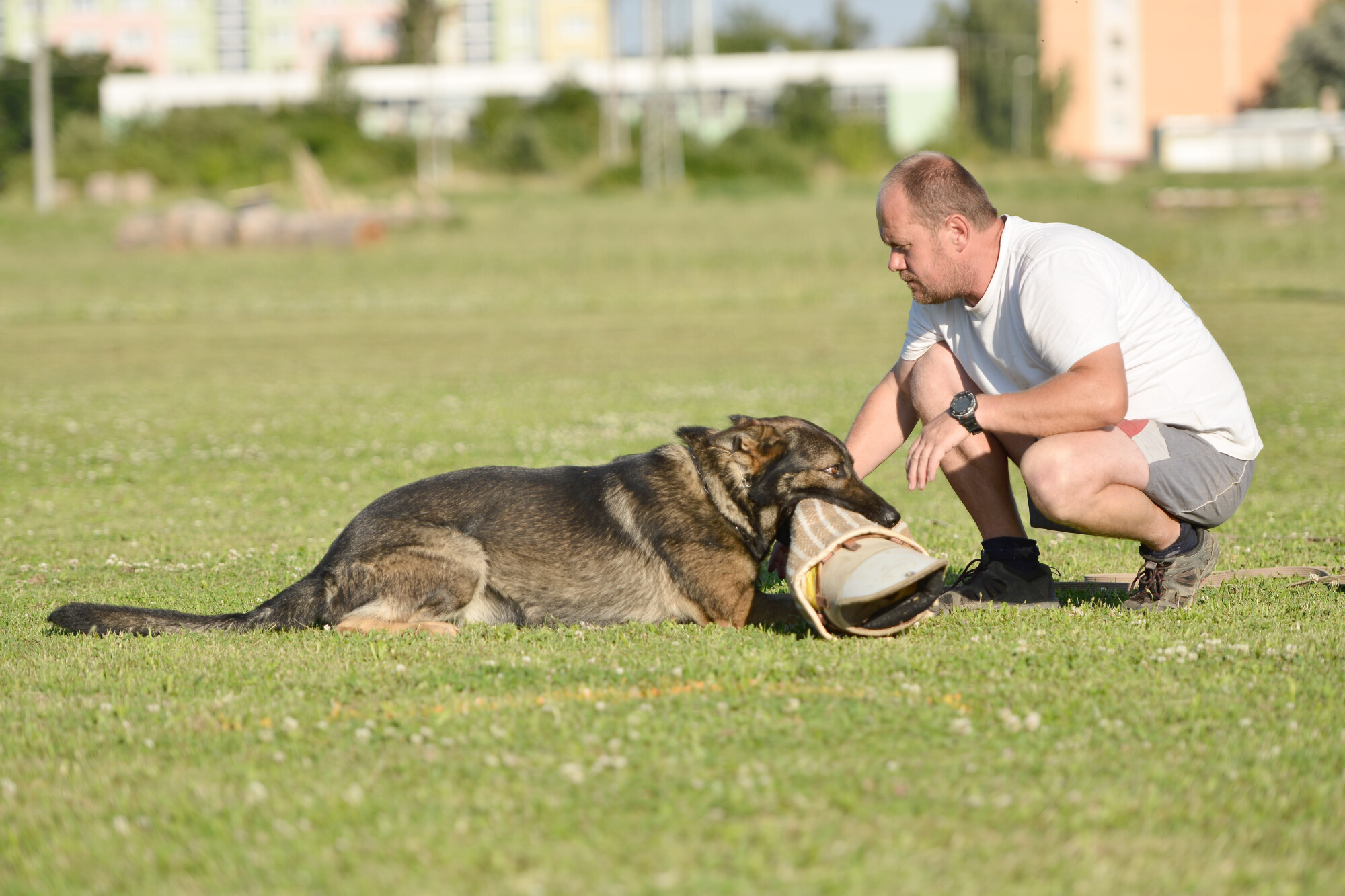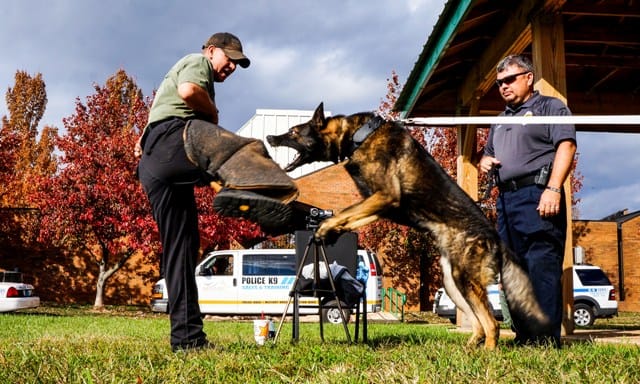“The Benefits Of K9 Training For Law Enforcement And Security”
It’s fascinating to consider that a K9 unit’s sense of smell is up to 100,000 times more sensitive than that of a human. This astonishing ability makes them invaluable partners in law enforcement and security sectors. Trained K9s assist in locating drugs, explosives, and even missing persons with unparalleled efficiency.
K9 training has a rich history dating back to World War I when military dogs were first deployed to detect bombs. Today, many law enforcement agencies report a significant reduction in search and operation times due to K9 involvement. These dedicated animals not only elevate security measures but also enhance team morale and public relations through community engagement efforts.
The Benefits of K9 Training for Law Enforcement and Security
K9 training offers remarkable benefits to law enforcement agencies. These trained dogs have a powerful sense of smell, allowing them to detect drugs and explosives effectively. They are also used in search and rescue missions, finding missing people much faster than humans can. The presence of a K9 unit often deters criminal activity just by being there. This makes K9 teams invaluable partners in maintaining safety and order.
Another important benefit is their ability to aid in evidence collection. K9 units can locate hidden evidence that might be overlooked. This skill enhances the ability of officers to solve cases more efficiently. Additionally, trained dogs can be used to track suspects, making it harder for criminals to escape. Recent statistics show that K9 units have increased the success rate of operations.
K9 units also play a key role in community relations. They participate in demonstrations at schools and public events, showing their skills and friendly nature. This engagement helps build trust between law enforcement and the community. Many people feel safer knowing that trained K9s are part of the security team. This positive image promotes cooperation between citizens and police.
The training process for K9 units is intense and thorough. It includes various techniques to ensure the dogs perform reliably in different situations.
- Obedience training
- Detection methods
- Search operations
- Physical conditioning
Each aspect is essential to prepare the dogs for their diverse roles. This well-rounded approach ensures that K9 units become efficient and effective members of law enforcement teams.
EVERYTHING You Wanted to Know About Police K9 Gear

Improved Detection Capabilities
K9 units significantly enhance detection capabilities in various environments. Their keen sense of smell enables them to identify substances hidden from human sight. Whether it’s locating explosives or drugs, these dogs can make a difference in safe outcomes. This skill is crucial in crowded venues like airports and sports arenas. It reduces the risk of dangerous items passing through unnoticed.
During search and rescue missions, K9 units excel at finding missing people. They can track scents over long distances, even in difficult terrains. This ability saves crucial time in emergencies. By following a scent trail, they can quickly access areas humans might miss. Their efforts often lead to quicker rescues and happier endings.
Today’s law enforcement agencies utilize technology to pair with K9 units for detecting contraband.
| Tool | Benefit |
|---|---|
| Drones | Scanning hard-to-reach areas |
| Cameras | Real-time tracking and analysis |
When combined with these tools, K9 units increase the efficiency of operations. This integration allows law enforcement to cover more ground with fewer personnel.
The training behind K9 detection skills is both rigorous and essential. These programs focus on honing the unique talents of each dog.
- Scent detection training
- Environmental adaptation
- Handler-dog communication
These components ensure the dogs perform well in various scenarios. The result is a reliable K9 unit ready to face any challenge head-on.
Relevance of K9 Units in Modern Law Enforcement
In today’s law enforcement landscape, K9 units are more relevant than ever. They offer unique skills that technology alone cannot replicate. For example, their ability to detect scents is unmatched, making them crucial for finding drugs and explosives. This expertise is vital in high-risk situations where human senses fall short. Their presence often adds an extra layer of security and confidence for officers.
K9 units also play a crucial role in crowd control and public safety. Their mere presence can deter unruly behavior, helping officers manage large gatherings effectively. During events like concerts or protests, they contribute to safer environments. This deterrence not only protects the public but also safeguards police officers. Communities benefit from the heightened sense of security these units provide.
Legal systems have recognized the value of K9 units by including their findings in court cases. These trained dogs can provide evidence that is sometimes critical to solving crimes. In court, the results from a K9 search are often deemed reliable. This is because their training meets strict standards, earning trust in legal proceedings. Their involvement can strengthen a case, leading to more definitive verdicts.
Furthermore, the bond between handlers and their dogs enhances operational effectiveness. A strong partnership ensures that commands are executed swiftly and accurately. This teamwork is built through continuous training and mutual trust.
- Daily exercises
- Problem-solving sessions
- Regular drills
Such activities refine their skills, preparing them for the challenges of modern law enforcement tasks.
Emotional and Social Impacts of K9 Units
K9 units have a profound emotional impact on their handlers and communities. The bond between a handler and their dog is strong and built on trust. This connection not only boosts morale but also enhances teamwork within the force. These dogs often become more than just partners; they are members of the team. This partnership often results in increased job satisfaction and emotional support for the handler.
In communities, K9 units play a significant role in fostering social connections. Their presence at events and schools helps build trust between the police and the public. Children and adults alike are drawn to these friendly and skilled dogs. This interaction breaks down barriers and encourages open communication. Such engagements help build a positive image of law enforcement in the community.
K9 units also provide comfort in challenging situations. After traumatic events, the gentle nature of these dogs can offer solace to victims. They have an ability to remain calm, which helps soothe anxious individuals. This calming effect can prove invaluable in high-stress environments. It provides a sense of stability and reassurance during difficult times.
The loyalty and dedication of K9 units create strong emotional ties within the police force. Officers often view their K9 companions as heroes who make personal sacrifices.
- Risking their lives
- Relentlessly working
- Staying on duty
These traits inspire admiration and respect from fellow officers. The sense of camaraderie enhances cohesion and spirit throughout the department.
Moreover, the work of K9 units often extends into rehabilitation and support programs. Their presence is used in initiatives to help those recovering from traumatic experiences. Engaging with these dogs can speed up the healing process for individuals in need. This is particularly true for children and veterans who find comfort in animal interactions. Such programs demonstrate the versatile benefits K9 units bring beyond traditional law enforcement duties.
Overall, K9 units create a positive emotional and social ripple effect. Their influence extends from individual handlers to the broader community. These dogs build bridges, foster healing, and provide invaluable support. They enrich the fabric of society, offering a blend of service, friendship, and protection. Their impact is truly felt by all who cross their path.
K9 Training Methods and Techniques
K9 training methods are as diverse as the roles these amazing dogs perform. One of the key techniques is obedience training, which establishes clear communication between the dog and handler. This foundation ensures the dog follows commands precisely, regardless of distractions. The training involves rewards like treats or praise to reinforce good behavior. Consistent repetition helps cement these commands over time.
Detection skills are also crucial for K9 units. Trainers teach dogs to identify specific scents such as narcotics or explosives. Scent detection relies on the dog’s natural ability to concentrate on individual smells. During training, dogs learn to signal their handler with a specific behavior, like sitting or barking. This alert helps officers take action promptly and effectively.
An essential part of K9 training is scenario-based exercises. These practices simulate real-life situations to prepare dogs for what they might face on the job. Scenarios include building searches, suspect apprehension, or crowded area monitoring. Such exercises sharpen the dogs’ decision-making and adaptability. They learn to remain focused and calm under stress.
Physical conditioning is another significant aspect of training. K9s must maintain high fitness levels to perform their duties efficiently. Regular exercise helps improve their stamina, strength, and agility. It ensures they can engage in tasks like pursuit and detention without exhaustion. For example, police dogs might undergo obstacle courses to hone their skills.
Socialization training ensures K9s can interact appropriately with humans and other animals. It exposes them to various environments, noises, and people. Proper socialization minimizes stress and unwanted behavior in different settings. This is essential for deployments in public spaces where they encounter crowds. By being well-socialized, K9s work effectively both alone and as part of a team.
Handlers continuously update their skills alongside their canine partners. This dual focus ensures both the human and dog are prepared for changing environments and technologies.
- Advanced scent workshops
- Updated communication strategies
- Innovative exercise regimes
Together, these strategies enhance the capabilities of K9 teams, ensuring they remain a critical asset in enforcing law and maintaining public safety.
Success Cases of K9 Units in Law Enforcement and Security
K9 units have countless success stories showcasing their effectiveness in law enforcement. One well-known case involved a police dog that found a missing child lost in the woods overnight. Despite the challenging terrain, the dog’s keen sense of smell located the child unharmed. This rescue demonstrated the K9 unit’s vital role in search and rescue missions. The community celebrated this incredible achievement.
In another notable example, a K9 unit intercepted a significant drug shipment at an international airport. The trained dog’s ability to detect narcotics was instrumental in stopping the illegal activity. Using their skills, the K9 unit uncovered hidden drugs in passenger luggage. This operation prevented harmful substances from entering the country. It highlighted the importance of K9s in maintaining border security.
K9s have also played key roles in high-profile criminal investigations. In one instance, a police dog tracked a suspect fleeing a crime scene, leading to a successful arrest. This event underscored the dog’s skill in following scent trails over long distances. The teamwork between the handler and the dog led to a quick resolution. Such cases emphasize the effectiveness of K9s in crime-fighting efforts.
Another inspiring story involves K9s working in disaster recovery. Following a natural disaster, these trained dogs assisted in locating trapped survivors under rubble. Their heightened senses allowed them to detect even faint human scents. By guiding rescue teams to these individuals, they saved lives that might have been lost. These efforts illustrate the invaluable contributions K9 units make during emergencies.
In some communities, K9 units help create safer environments through regular patrols. By doing so, they deter potential criminal activities and enhance public confidence. Areas with active K9 units often see reduced crime rates, thanks to their preventive presence. This impact reinforces the value of K9s as an ongoing security measure. Their influence extends beyond individual actions to broader social benefits.
Overall, K9 unit success stories serve as powerful examples of their vital role in law enforcement. Their diverse abilities, from finding missing persons to preventing crime, underline their necessity. K9s and their handlers form an effective team ready to face various challenges. Their dedication and skill continue to make a significant impact on public safety worldwide.
Frequently Asked Questions
K9 units play a crucial role in law enforcement and security, significantly enhancing safety and efficiency. Here are some commonly asked questions about the training and impact of these remarkable canine teams.
1. How do K9 units assist in search and rescue operations?
K9 units are integral to search and rescue due to their advanced scent-detection abilities. Dogs can detect even faint human scents over long distances, which makes them essential in locating missing or trapped individuals. Their unique skill set enables quick response times in emergencies, offering hope in situations where human capabilities may fall short.
Moreover, the psychological support that dogs provide during rescues cannot be understated. Their presence can calm and reassure victims in distress, making the entire rescue operation more efficient. The partnership between handlers and their K9s not only ensures the technical success of the mission but also promotes a comforting environment for those being rescued.
2. What types of training do K9 dogs undergo for law enforcement tasks?
K9 dogs undergo rigorous training that encompasses various skills required for law enforcement. This includes obedience training, scent detection, and scenario-based drills. Obedience training ensures they follow commands promptly, while scent detection helps them identify and track substances or individuals accurately.
Scenario-based exercises prepare them for real-world challenges, enhancing their decision-making and adaptability. These training programs focus on building strong communication between the dog and handler, ensuring precise teamwork. Regular updates and continuous training keep both parties ready to tackle evolving security demands.
3. How does the presence of K9 units affect community relations with law enforcement?
The presence of K9 units often positively impacts community relations. These units participate in educational programs and demonstrations at schools and public events, creating opportunities for interaction. Such engagements help demystify police work and build trust between the community and law enforcement agencies.
Moreover, K9 units serve as both protective companions and approachable figures, bridging gaps between officers and citizens. Their demonstrations showcase the humane aspect of policing, illustrating dedication and service in a relatable manner. This fosters a positive perception of local law enforcement, making K9 units an asset beyond their operational prowess.
4. What role do K9 units play in preventing crime?
K9 units are pivotal in crime prevention due to their broad range of applications. Their mere presence deters criminal activities, as they can quickly identify potential threats and contraband. In patrol scenarios, the visibility of a K9 unit enhances the deterrent effect, reducing the likelihood of crimes occurring in supervised areas.
Additionally, K9s contribute to quick and decisive action when crimes do occur. Their tracking and apprehension abilities aid in the swift capture of suspects, preventing further criminal acts. By supporting officers with their keen senses and training, K9 units effectively enhance overall policing strategies aimed at maintaining community safety.
5. How do K9 units contribute to evidence gathering in criminal investigations?
K9 units play a vital role in evidence gathering, significantly contributing to the success of criminal investigations. Their ability to detect traces of substances like drugs, explosives, and even firearms increases the chance of uncovering critical evidence. This process often leads to solving cases more rapidly and accurately.
Furthermore, the evidence discovered by K9s is typically considered reliable in legal settings. Their training meets strict standards, assuring courts of their findings’ accuracy. K9 units thus serve as invaluable assets in both the investigative and judicial phases of law enforcement, enhancing justice processes.
Police K9 Training Patrol dog school; So you want to be a handler?

Conclusion
K9 units have established themselves as indispensable assets in the fields of law enforcement and security. Their advanced detection capabilities, paired with rigorous training, make them uniquely suited to perform tasks that go beyond human reach. From search and rescue to crime prevention, their contributions are both diverse and critical. The partnership between handler and dog ensures a combination of skill and reliability unparalleled in many other forms of policing.
Beyond their operational roles, K9 units also bridge societal gaps through community engagement and education. They foster an environment where police work is seen not just as a necessary duty but as a partnership with the public. Their presence brings a sense of safety, trust, and reassurance, making them a vital element in modern security frameworks. Together, handlers and their canine partners continue to build safer and more connected communities.





